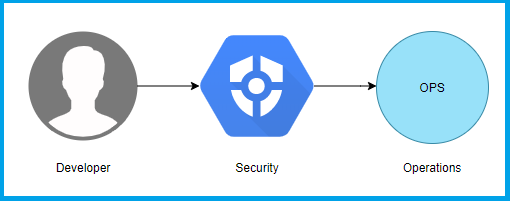By Raghav K.
Organizations are not just looking for applications to help overcome gaps with digitization. Alibaba Cloud launched a cloud-native architecture that works with Kubernetes as the operating system with containers and microservices to facilitate application building and deployment completely in-sync with technological guidelines for the future.
Retrofitting applications may work for a while, but with technologies and practices phasing out, organizations have to look for ways to strategically alter the technology stack and focus on architecture for tomorrow.
Alibaba Cloud helps you dissolve the complexities related to the power buying of resources. Alibaba Cloud allows flexible resource provisioning with different level SLAs that counters any scenarios presented. The service integration within the Alibaba Cloud environment enables a range of solutions that are scenario-based instead of product-based.
The same line of products can help you in multiple scenarios. The only thing that changes is the combination of resources based on the requirement. While implementing a solution such as DevOps, remember, if you refer to case studies for organizations of the same trade, their solution might not be suited for your organization. Enterprises have made similar mistakes where they implemented a DevOps pipeline as a plug-and-play from another organization to save time and money. The idea was to reduce complexity, but this type of practice increased complexity.
You must take careful consideration to curate a personalized solution that encompasses and establishes a solution based on your custom requirements.
Troubleshooting is a challenging skill that requires a specialized skill set. However, complex solutions in today’s IT cloud require a more developed troubleshooting skillset. Different tools and practices allow for different segments of resolution within an enterprise. It is not a straightforward practice anymore, where one single on-premises setup can process everything.
The technology stack and tools of the trade have evolved. More advanced and evolved technology stacks encompass more complex functionality. When disaster strikes, multiple systems could be affected, causing a wide array of issues.
IT teams have to unwind some of the complexity inherent to solving challenging IT needs. Alibaba Cloud provides a strong O&M solution set that can help you dissolve complexities related to disaster recovery. The tech stack implemented by Alibaba Cloud is based on the open-source model and provides seamless integration with open-source tools for deployment, observability, maintenance, and disaster recovery. Alibaba Cloud services showcase one of the best disaster recovery scenarios with multi-region hybridity enabled solutions that maintain the availability of your infrastructure and services if something goes wrong.
Reducing the tech stack and troubleshooting complexities within the IT environment ensures you will not face any barriers to new technology adoption like hybrid cloud and multi-cloud-based cloud-native services. The way out of the cloud complexity is to eliminate native system complexity related to databases, operating systems, containers, E-HPC, and any other system that needs to implement other specialized tools to run smoothly. Alibaba Cloud ensures a zero-hassle system when it comes to cloud migration. You can adopt single cloud, multi-cloud, or hybrid cloud architecture and use all the integrated service solutions from a single account.
Security practices are among the prominent reasons for cloud complexity. These complexities arise due to a number of reasons, which can lead to chaotic vulnerabilities. There are so many endpoints that need to be secured, including:
There needs to be a clear practice-based layout within the organization that entails which systems need more security, based on the user-access ratio and data access methodologies. When it comes to secure delivery practice pipelines, such as DevOps, using DevSecOps can reduce the complexities related to security.

Cloud-native practices add another layer of security that works on a zero-trust policy. The Zero Trust security architecture model is a concept with a baseline that does not trust anything automatically. The architecture requires everything, including users, devices, nodes, or anything requesting access to internal system resources, must be authenticated and authorized before granting access to the resource.
Recently, there has been a significant increase in the number of breach attempts by cyber attackers. To cope with such attacks, organizations typically adopt stricter security measures to safeguard their data. However, more stringent security measures result in further complexity when our IT teams need to access that data. As a result, it increases the overall complexity of your solution.
The same principle applies here. You can add security methods and practices, but the users’ data visibility should not be affected. The user experience is the end game, and if you cannot maintain it, you are adding to the complexities. Alibaba Cloud provides a one-stop-solution for cloud solutions. You can use Alibaba Cloud ARMS for unparalleled observability of an application or resource, while security offers a host of solutions, including IAM solutions like RAM.
A lot depends on your IT teams. How does the team manage situations? How well are your future strategies formulated? How effective is your use of technology?
However, automation is not limited to specific practices. You can use automation at almost every endpoint within your system, including O&M or resource orchestration. The most effective and efficient automation practice can only be determined by a talented IT team that can pinpoint the automation needs without hyper-automation.
The end goal is to remove most of these complexities, so your cloud migration can run uninterrupted and produce more productive results.

2,593 posts | 791 followers
FollowAlibaba Clouder - April 1, 2021
Alibaba Clouder - March 8, 2021
Alibaba Clouder - April 23, 2021
Alibaba Clouder - April 2, 2021
Alibaba Clouder - March 9, 2021
Alibaba Clouder - April 6, 2021

2,593 posts | 791 followers
Follow Microservices Engine (MSE)
Microservices Engine (MSE)
MSE provides a fully managed registration and configuration center, and gateway and microservices governance capabilities.
Learn More DevOps Solution
DevOps Solution
Accelerate software development and delivery by integrating DevOps with the cloud
Learn More Alibaba Cloud Flow
Alibaba Cloud Flow
An enterprise-level continuous delivery tool.
Learn More Resource Management
Resource Management
Organize and manage your resources in a hierarchical manner by using resource directories, folders, accounts, and resource groups.
Learn MoreMore Posts by Alibaba Clouder